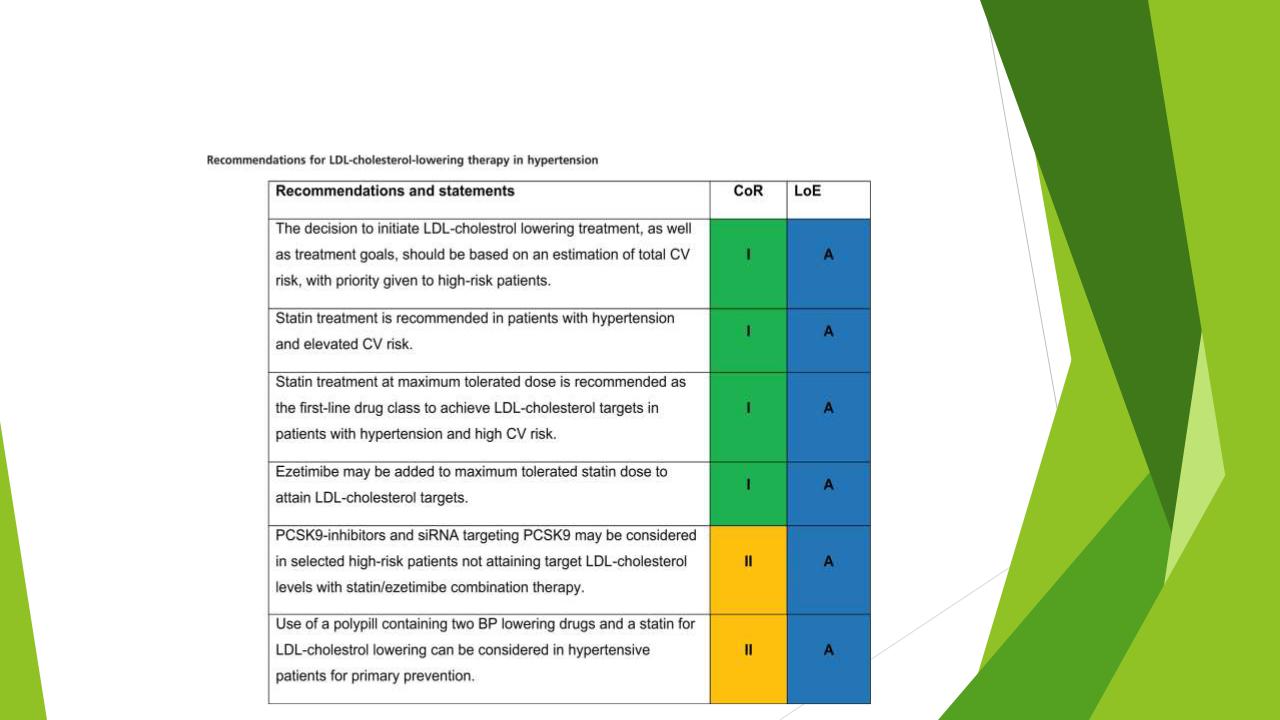
Lesson topic №21 Синдром артериальной гипертензии (Arterial hypertension in the outpatient setting) (1)
.pdf
Concomitant medications

Concomitant medications

Treatment of hypertensive patients with coronary artery disease
BBs, DHP-CCBs and nondihydropyridine CCBs are the preferred drugs for the treatment of hypertension in symptomatic CAD patients with angina, with a DHP-CCB and a BB in combination if needed.
In patients with a recent myocardial infarction, BBs also improve prognosis and should be prescribed unless contraindicated.
ACEis have been shown to reduce CV outcomes in high CV risk patients including patients with CAD in RCTs, which supports their use
in CAD as part of the antihypertensive combination therapy, while ARBs can substitute ACEis in patients
with hypertension and CAD who are intolerant to ACEis.

Heart failure with reduced ejection fraction (HFrEF)
In patients with hypertension and heart failure with reduced ejection fraction (HFrEF) it is recommended to combine drugs with documented outcome benefits including ACEis (ARBs if not tolerated),which could be substituted by ARNI (sacubitril/valsartan), BBs, MRAs, and SGLT2is, if not contraindicated and well tolerated.
If patients remain with uncontrolled hypertension despite uptitration of drugs from the four major drug classes (RAS-inhibitors, BBs, MRAs, and SGLT2is) and use of additional treatment with a diuretic to manage fluid balance, a DHPCCB can be added for BP control.
Use of non-DHP-CCB is not recommended in HFrEF due to their pronounced negative-inotropic effect

Heart failure with preserved ejection fraction (HFpEF)
HFpEF accounts for about half of all HF patients, and hypertension is by far the most frequent precursor of and comorbidity for this condition.
Treatment of hypertension with all major antihypertensive drug classes (ACEis or ARBs, BBs, CCBs, and Thiazide/Thiazide-like diuretics) is recommended in patients with HFpEF.
SGLT2is are recommended independently from the presence of type 2 diabetes.
Substitution of a RAS-inhibitor by an ARNI (sacubitril/valsartan) can be considered.
Treatment with a MRA regardless of diagnosed resistant hypertension can be considered

HYPERTENSION AND DIABETES MELLITUS
BP should be monitored to detect hypertension in all patients with diabetes, because it is a frequent comorbidity associated with an increase CV risk and risk for kidney events.
Antihypertensive treatment in type 2 diabetes is recommended to protect against macrovascular and microvascular complications.
Drug treatment strategies in patients with type 2 diabetes should be the same as for patients without diabetes but the primary ai m is to lower BP below <130/80 mmHg.
BP control is difficult in diabetes and combination treatment is almost always necessary.
SGLT2is are recommended to reduce cardiac and kidney events in type 2 diabetes. These agents have a BP lowering effect.

Thank you for your attention.
